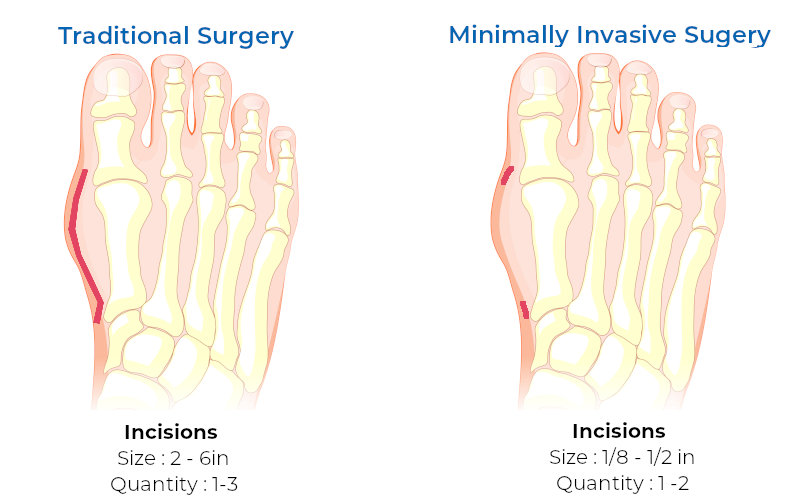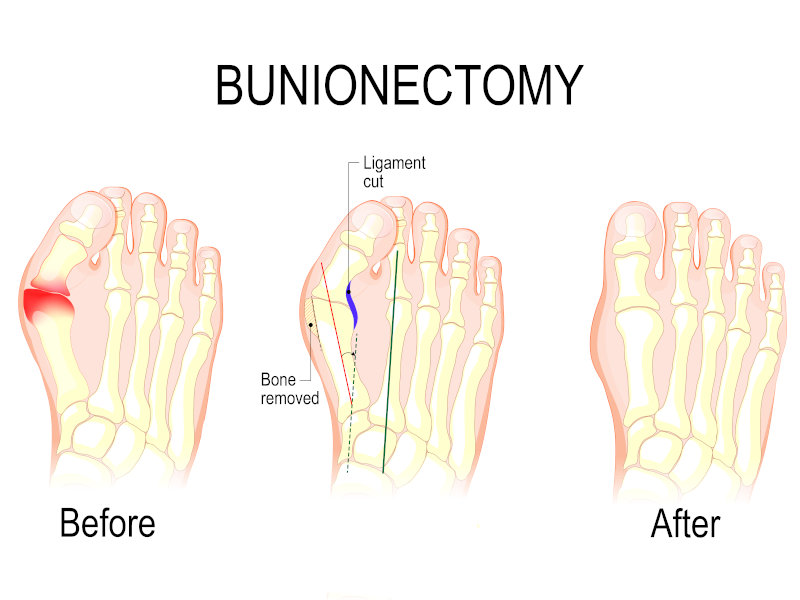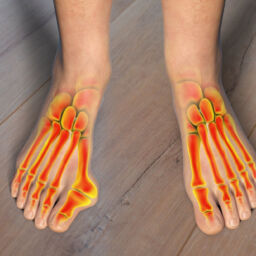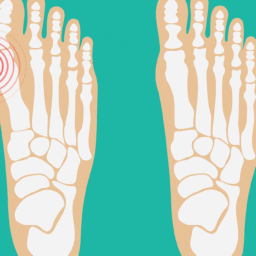
When it comes to foot health, we often underestimate its importance until we’re faced with discomfort or pain. Whether it’s bunions, hammertoes, stress fractures, or plantar fasciitis, these conditions can hinder our daily lives and keep us from enjoying our favorite activities. At Certified Foot and Ankle Specialists, Dr. Bowles is practicing advanced minimally invasive bunion surgery procedures to help patients feel better quickly and stay active.
For someone who has a painful bump over the big toe joint, it may be a painful bunion deformity. A foot and ankle surgeon can evaluate if you need surgery and if you qualify for minimally invasive surgery options. These surgery procedures are outpatient same-day procedures that require twilight anesthesia and you can walk the same day. These procedures involve tiny incisions in the skin, correction of the bump, and minimal recovery time due to minimally invasive bunion correction techniques.
What is minimally invasive bunion surgery?
Minimally invasive bunionectomy is a surgical procedure making tiny incisions and using special instruments for cutting the bones and realigning the big toe joint. The surgical procedure involves tiny incisions in the skin to allow special instruments to cut and realign the bones of the big toe joint and to allow for pins or screws to be placed permanently to hold the bunion correction.
For the commonly encountered painful hammertoe deformity, we offer minimally invasive hammertoe procedures that ensure quicker recovery times, less postoperative discomfort and an excellent success rate. We utilize a technique called a flexor tenotomy, a procedure that involves releasing the tendon causing the deformity. This allows the toe to regain its normal position without major surgery. It’s a quick, in-office procedure that can significantly improve your quality of life.
Another minimally invasive procedure offered is in the innovative treatment of stress fractures. For active patients who are injured but are unable to be off the foot for 8 weeks, we offer a subchondroplasty procedure, which is a minimally invasive solution for stress fractures. This procedure involves putting a bone substitute into the affected area which promotes healing and helps restore normal foot function and reduce pain with little downtime.
Plantar fasciitis is a common foot issue that can linger for months in some cases and severely limit daily activity. Another minimally invasive option in our treatment repertoire includes endoscopic plantar fasciotomy for those suffering from chronic plantar fasciitis. This is a common condition that can cause pain in the heel for months in some severe cases. This procedure involves making small incisions to introduce a camera and a small, specialized instrument to visualize and release tension in the plantar fascia ligament. The result? A safe procedure that provides a major reduction in heel pain and a faster path to recovery.
Nerve pain and neuropathy is a common condition that is frustrating and debilitating for many patients and many doctors do not offer minimally invasive treatment options. For patients with burning, tingling, numbness, and balance issues a peripheral nerve stimulator may be an ideal option. This procedure is a minimally invasive procedure used to treat pain and numbness in the legs and feet and can be performed safely in patients with diabetes or patients with swelling in the legs since it is performed with tiny incisions. Patients have excellent results and relief from years of pain in their legs and feet with fast recovery.
Don’t let foot, ankle, or leg pain dictate your life. With minimally invasive surgery procedures, all without the need for a large incision or a long recovery period, you can step forward into a pain-free future. Book an appointment with Dr. Bowles at our Boca Raton Podiatric Clinic today and experience the difference of compassionate and innovative podiatric care.
Here are some frequently asked questions by patients:
What are the risks of minimally invasive techniques?
Traditionally, bunion surgery involves opening the soft tissues and joint and produces a 2-inch scar which can increase the risk of infection and scarring. The advantage of minimally invasive bunionectomy with tiny incisions is the decreased risk of infections and decreased scar tissue compared to invasive bunion surgery.
What does the surgery recovery involve?
After surgery, post-operative care involves small bandages that are kept dry for two weeks and a surgical shoe to protect the foot. Surgery patients can walk on the foot right away and the minimally invasive bunion surgery allows for a faster recovery. Recovery time for invasive bunion surgery involves 4-6 weeks in a surgical shoe or boot.





